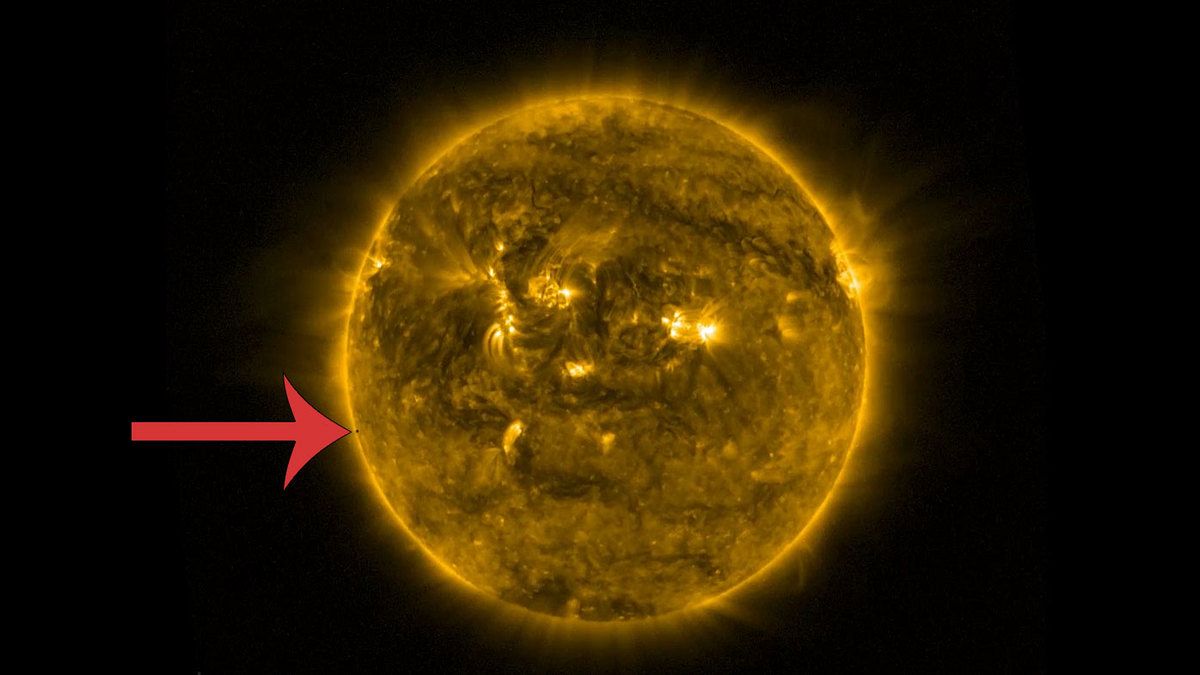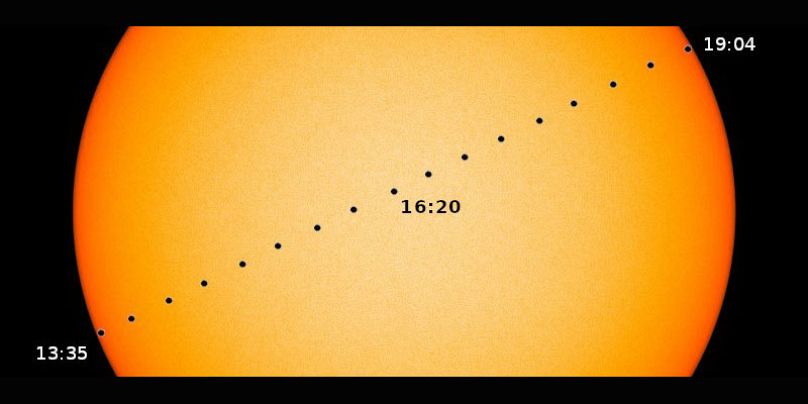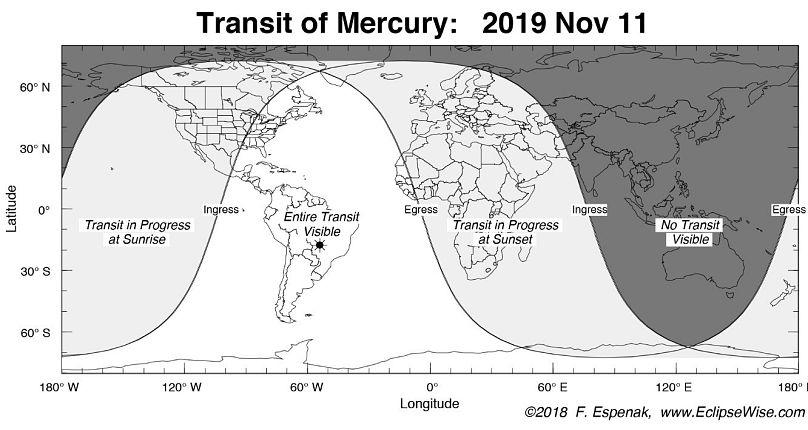The phenomenon only occurs 13 times each century. It last happened in 2016, but the next time Mercury transits the sun will be in 13 years’ time in 2032.
A rare astronomical event is currently taking place, as the solar system’s smallest planet Mercury passes in front of the sun.
The predictable phenomenon only occurs 13 times each century. It last happened in 2016, but the next time Mercury transits the sun will be in 13 years’ time in 2032.
You can watch the event, which started at 13:35 CET (12:35 GMT), on one of the livestreams below.
In Europe you will be able to see the beginning of the transit, and on the west coast of North America you will be able to see the end.
It will be seen in its entirety in the Canary Islands, the east coast of the United States, Central America and South America.
Space enthusiasts will want to get a glimpse of the rare phenomenon, and there are a number of ways to do so. However, it is crucial that planet-watchers don’t try to watch the event outside with their own eyes without specific equipment.
How to watch the event safely
Firstly and most importantly, looking at the Sun can cause serious damage to the eyes, and trying to capture an image on a phone can even damage the phone’s camera. Secondly, Mercury is too small to be seen with the naked eye, and it doesn’t darken the sun in the same way as a solar eclipse caused by the moon.
The easiest way to watch the five-hour transit is with one of the livestreams above.
You could also join a viewing event, which will have the correct equipment set up - get in touch with a local astronomy group.
To watch it with your own equipment, you'll need a telescope or binoculars, with at least 50x magnification, fitted with a solar filter.
This map of the Spanish National Geographic Institute shows the transit times.
And this diagram shows the locations where it can be viewed.
It will not be visible in India, Australia and East Asia.














